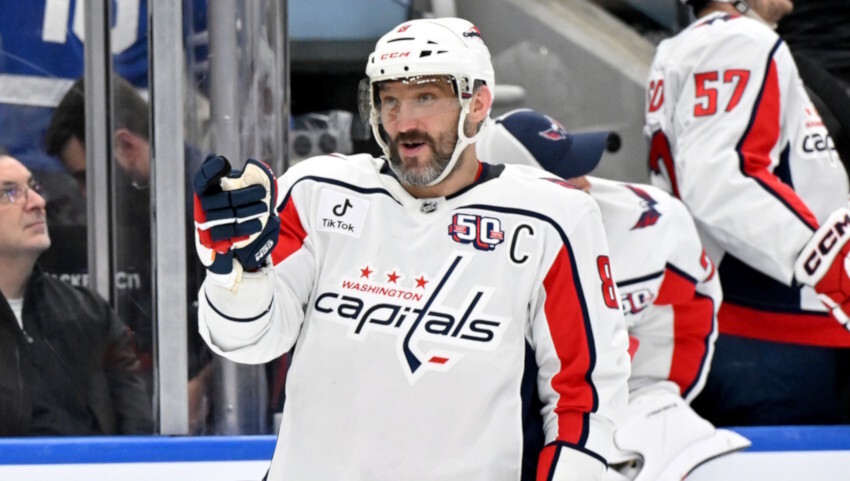The Washington Capitals have had no shortage of memorable moments over the decades, with certain games defined by staggering score differentials that remain part of franchise history. While the Capitals are often associated with postseason battles and their 2018 championship run, their regular-season schedule has also produced results that left fans and bettors with lasting impressions. Looking back at their most significant wins provides insight into how offensive power, defensive discipline, and individual performances combined to achieve historic outcomes.
As of August 2025, Casinono License lists the Capitals at +2800 odds to win the 2026 Stanley Cup. That position places them in the middle tier among Eastern Conference teams, reflecting a roster in transition after years of change. The past can often inform expectations, and examining some of Washington’s most lopsided results offers perspective on the team’s offensive ceiling and the potential value bettors may find in certain matchups.
Ten Goal Win in Quebec
One of the earliest examples of Washington’s offensive ceiling came on February 6, 1990, when the team defeated the Quebec Nordiques 12–2 on the road. The win still stands as the most significant margin in team history, matching the ten-goal difference of later games but magnified by the fact it occurred away from home. Dino Ciccarelli finished the game with a goal and three assists, while Geoff Courtnall added two goals and another assist. In total, nine different Washington players recorded multiple points. Quebec struggled defensively throughout the season, but Washington’s conversion on 12 of its 45 shots emphasized efficiency and relentless pressure. The Capitals also killed off every Nordiques power play, allowing no momentum shift as the game tilted heavily in their favor.
Lightning Zapped
Nearly a decade later, Washington produced a similar display against the Tampa Bay Lightning on February 3, 1999. Playing at MCI Center, the Capitals scored ten times in a 10–1 result that stands as their highest home output since moving into the expanded era of NHL play. Peter Bondra led the attack with a hat trick, his eighth career three-goal game, while Adam Oates registered three assists. Washington scored five goals in the first period alone, forcing Tampa Bay to remove its starting goaltender before the intermission. The Capitals finished with 35 shots and converted half of their power-play opportunities, indicating how the special-teams unit contributed to the lopsided margin.
Penguins Iced
Defensive structure also defined one of the franchise’s most notable performances. On October 29, 1991, the Capitals shut out the Pittsburgh Penguins 8–0. Don Beaupre stopped all 24 Pittsburgh shots to secure one of his most memorable goaltending outings. Washington scored in each period, led by Mike Ridley’s three points and Dmitri Khristich’s two goals. The Penguins entered the game as defending Stanley Cup winners, making Washington’s complete control more striking. The Capitals’ penalty kill neutralized Pittsburgh’s opportunities on the power play, while their forecheck disrupted transition chances. For bettors of that era in emerging overseas markets, a result of such a margin against a favored opponent would have paid off well, even though record-keeping on lines from that time remains limited.
Nine to Nothing
A different type of statement was made on March 12, 1996, when the Capitals defeated the Vancouver Canucks 9–0 at USAir Arena. Jim Carey, then in the midst of his Vezina Trophy season, recorded a 28-save shutout. Washington spread the scoring load, with Michal Pivonka and Steve Konowalchuk each registering multiple points. Vancouver managed a handful of power-play opportunities but could not solve Carey’s goaltending, and their defensive breakdowns left netminders exposed against a balanced Washington attack. The nine-goal margin remains tied for the second-largest win in overall franchise history. It is their high-water mark for a shutout result, cementing a place among the NHL’s most dominant defensive performances.
The 2025-26 Capitals
Today’s Washington squad enters 2025–26 with a mix of younger players and established veterans. The offensive identity has shifted with less reliance on singular scorers and more emphasis on depth. The team’s power play efficiency last season hovered around 20 percent, placing them near league average, while their penalty kill finished below average at 76 percent. Goaltending remained a question mark, with the team’s save percentage ranking in the bottom third of the league. These numbers suggest that while future blowout results are possible, the current roster may deliver outcomes through tighter, lower-scoring contests.
For bettors considering the Capitals at +2800 to win the Stanley Cup, the odds reflect the long-term uncertainty surrounding their chances. They indicate modest expectation for contention but enough potential to reward those who see value in an experienced roster with postseason history. Washington’s most significant past wins illustrate both the potential for explosive offense and the volatility that comes with it. These games serve as a reminder that any given night can produce results beyond projections, whether it’s a ten-goal outburst or a shutout against a favored team.
Whether the 2025–26 Capitals can replicate any form of those historic margins remains to be seen. The game has changed, with scoring more evenly distributed across the league and defensive systems often preventing double-digit totals. Still, hockey’s unpredictability leaves the chance for singular performances to emerge. As Washington transitions its roster, these historic contests offer context and perspective, underscoring that while odds provide a framework, outcomes on the ice often defy statistical probabilities.



